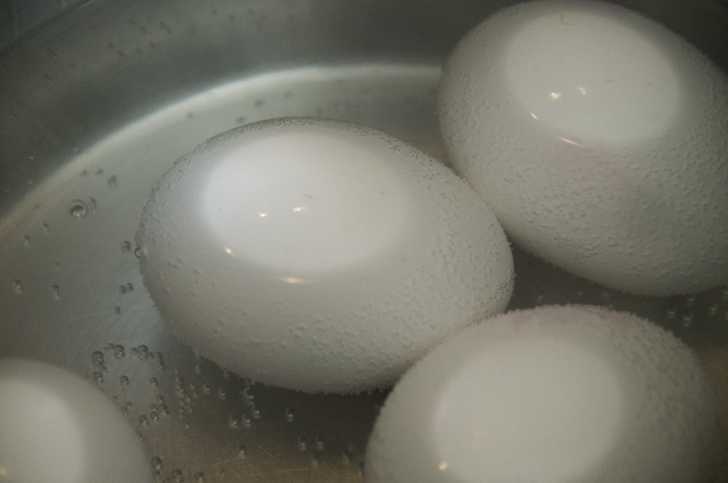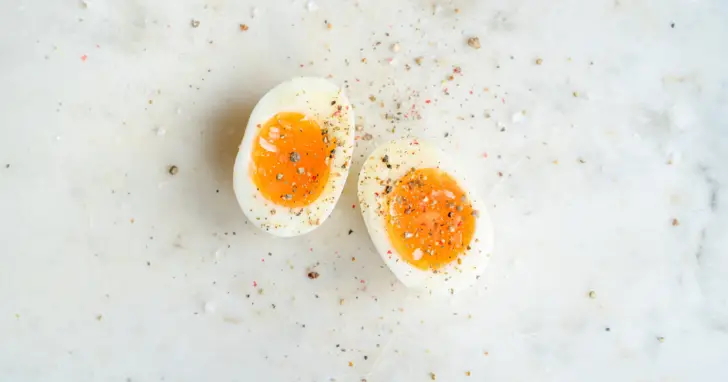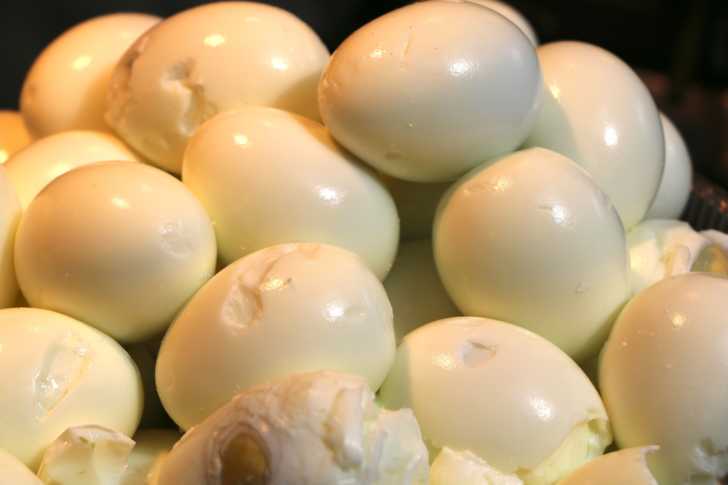Renowned Chef Shares Hack To Peel Hard-Boiled Eggs
Hard-boiled eggs are among the simplest foods you can prepare, yet they remain one of the most versatile and universally loved items in any kitchen. They can be enjoyed on their own, seasoned with nothing more than a sprinkle of salt and pepper, or used as an essential ingredient in salads, sandwiches, and appetizers. From the classic Cobb salad to elegant deviled eggs served at a holiday gathering, hard-boiled eggs make frequent appearances on tables across the world. But for all their culinary potential and nutritional benefits, there’s one recurring issue that frustrates even the most seasoned home cooks: peeling them.
If you’ve ever stood over your kitchen sink picking off tiny bits of eggshell while the white beneath tears apart in uneven clumps, you’re not alone. Peeling hard-boiled eggs has long been the bane of many cooks’ existence. Despite numerous internet tips and countless family traditions passed down through generations, the challenge persists. The good news is that one of the most renowned culinary minds in the world has offered a surprisingly simple solution—and it’s been making waves for good reason.
The Common Egg-Peeling Problem

Hard-boiled eggs may be easy to cook—just place them in boiling water and wait—but their post-boil handling is notoriously tricky. Anyone who’s made a batch knows the routine: once the eggs are cooked and cooled, peeling them can either be a breeze or a total disaster. Some shells come off in large pieces, leaving a perfectly smooth egg beneath. Others cling to the surface like glue, taking chunks of egg white with them and leaving a pitted mess behind.
Many factors contribute to this inconsistency, including the freshness of the eggs, how they were cooled, and even how they were cooked. For years, cooks have tried every hack in the book: adding baking soda to the water, rolling the egg to crack it uniformly, shaking it in a jar, or starting the eggs in hot versus cold water. Results have varied, and for many, peeling eggs remains an unpredictable struggle.
A Culinary Legend Offers a Solution
Enter Jacques Pépin, the celebrated French chef, television personality, and cookbook author known for his accessible, no-nonsense approach to cooking. With a culinary career spanning over six decades, Pépin has mentored countless home cooks and professionals alike. His techniques are revered not just for their sophistication, but for their practicality—always focused on making great food simpler and more enjoyable.
According to a tip Pépin shared with Lifehacker, the key to easy-to-peel hard-boiled eggs lies in one tiny, deliberate action: poke a small hole in the wide end of the egg before boiling it. Yes, that’s it. A simple poke—using a pin, thumbtack, or needle—is all it takes to transform your egg-peeling experience.
Why This Trick Works
The wide end of an egg naturally contains a small air pocket. During the boiling process, that air expands, often pushing against the shell and causing cracks, or resulting in eggs with oddly shaped flat ends. By creating a small hole in this end before boiling, you allow the trapped air to escape gradually. This not only helps the egg cook more evenly, but it also leads to a smoother, more rounded shape.
More importantly, the release of that air pocket seems to make the membrane beneath the shell less likely to stick to the egg white. The result? Once boiled and cooled, the shell comes off in larger pieces, often sliding away with little effort and leaving the egg beneath pristine and intact.
This hack addresses two problems at once: it simplifies the peeling process and ensures a better-shaped egg. It’s especially helpful for recipes where presentation matters, like deviled eggs or egg salad sandwiches where you want uniform slices.

How To Do It Step-by-Step
If you want to try this technique for yourself, here’s a quick guide:
- Prepare Your Tools: Use a clean pin, sewing needle, or thumbtack. Sterilize it if necessary. Some egg piercers are available online or in kitchen stores and are specifically designed for this purpose.
- Poke the Egg: Gently tap the pin into the wide end of a raw egg to make a tiny hole. You don’t need to puncture it deeply—just enough to pierce the shell and membrane slightly.
- Boil the Eggs: Place the eggs in boiling water, being careful not to drop them too hard, as the hole makes them slightly more fragile.
- Cool the Eggs: After boiling, immediately transfer the eggs into an ice bath. Let them sit for at least 10 minutes. The cold water not only stops the cooking process but also contracts the egg inside, making the shell easier to remove.
- Peel with Ease: Tap the egg gently on the counter, roll it lightly to loosen the shell, and peel it under running water if needed. You’ll likely find the shell slides off in large, satisfying pieces.
Alternative Peeling Tips That Also Work
If you’re not ready to start poking holes in your eggs or don’t have a pin handy, don’t worry—there are other proven techniques for peeling hard-boiled eggs more easily:
- Use Older Eggs: Fresher eggs have a lower pH level, which causes the albumen (egg white) to bond tightly with the inner membrane. As eggs age, the pH rises, making them easier to peel. If possible, use eggs that are at least 7–10 days old.
- Boil, Then Shock in Ice Water: Placing eggs in a bowl of ice water immediately after boiling helps separate the membrane from the egg white. The dramatic temperature change makes peeling significantly easier.
- Peel Under Cold Water: Running water under the shell as you peel can help remove tiny fragments and allows water to slip between the shell and the egg, easing separation.
- Shake in a Jar: Some people place a hard-boiled egg in a jar with a little water, shake it vigorously, and then find that the shell slips off with minimal effort. This method is a little more aggressive, so it may not be ideal if you want picture-perfect eggs.
- Steam Instead of Boil: Steaming eggs rather than boiling them is another method some chefs swear by. The steam penetrates the shell and can help loosen the membrane from the egg white.
Egg Peeling: More Than Just Convenience
While the act of peeling eggs may seem like a small part of the cooking process, it can have a big impact on your overall kitchen experience. There’s something uniquely satisfying about peeling a hard-boiled egg in one or two fluid motions. No mess, no lost egg white, no frustration—just a clean, smooth result ready to be used in your next dish.

Jacques Pépin’s pinhole method stands out not just because it works, but because it demonstrates the power of thoughtful cooking. A small change—barely an extra second of effort—can yield significantly better results. It’s a reminder that great cooking often lies in the details, and that paying attention to the small things can elevate even the most basic dishes.
Conclusion
In the end, peeling hard-boiled eggs doesn’t have to be a dreaded task. Thanks to insights from culinary legends like Jacques Pépin and the wealth of kitchen hacks developed over time, there are multiple ways to make this process smoother and more enjoyable.
So, the next time you prepare a batch of hard-boiled eggs—whether for a protein-packed breakfast, a picnic-ready potato salad, or a tray of deviled eggs for a gathering—consider trying the pinhole trick. It might just change the way you think about boiling eggs forever.
And if you have your own tried-and-true method for peeling eggs easily, we’d love to hear about it. After all, the kitchen is a place for sharing, learning, and discovering those little secrets that make cooking more delightful.

